-
 Bitcoin
Bitcoin $108,894.1122
0.78% -
 Ethereum
Ethereum $2,576.7002
2.37% -
 Tether USDt
Tether USDt $1.0000
-0.02% -
 XRP
XRP $2.2743
0.90% -
 BNB
BNB $662.6529
1.20% -
 Solana
Solana $152.3741
3.18% -
 USDC
USDC $1.0000
0.01% -
 TRON
TRON $0.2865
0.68% -
 Dogecoin
Dogecoin $0.1718
4.83% -
 Cardano
Cardano $0.5873
2.01% -
 Hyperliquid
Hyperliquid $39.7211
2.09% -
 Sui
Sui $2.9080
0.43% -
 Bitcoin Cash
Bitcoin Cash $495.0930
2.00% -
 Chainlink
Chainlink $13.6045
3.29% -
 UNUS SED LEO
UNUS SED LEO $9.0692
0.54% -
 Avalanche
Avalanche $18.2226
2.15% -
 Stellar
Stellar $0.2486
3.70% -
 Shiba Inu
Shiba Inu $0.0...01176
1.99% -
 Toncoin
Toncoin $2.7908
-7.52% -
 Hedera
Hedera $0.1594
3.69% -
 Litecoin
Litecoin $87.8847
1.25% -
 Monero
Monero $318.2718
0.86% -
 Polkadot
Polkadot $3.3962
1.17% -
 Dai
Dai $0.9999
-0.01% -
 Ethena USDe
Ethena USDe $0.9999
-0.02% -
 Bitget Token
Bitget Token $4.4102
0.34% -
 Uniswap
Uniswap $7.3795
1.39% -
 Aave
Aave $286.7121
5.74% -
 Pepe
Pepe $0.0...01007
3.39% -
 Pi
Pi $0.4602
2.28%
What should I do when SUI's NVT signal diverges?
Divergence in SUI's NVT signal can signal market shifts; positive divergence may suggest buying opportunities, while negative divergence calls for reducing exposure.
Apr 25, 2025 at 12:14 pm

When you notice that SUI's NVT (Network Value to Transactions) signal is diverging, it's essential to understand what this means and how you should respond. Divergence in the NVT signal can indicate a potential shift in the market dynamics of SUI, a cryptocurrency that has garnered significant attention in the crypto community. This article will guide you through understanding the NVT signal, interpreting its divergence, and the actions you should consider taking.
Understanding the NVT Signal
The NVT ratio is a key metric used to assess the value of a cryptocurrency relative to the volume of transactions on its network. For SUI, the NVT signal is calculated by dividing the market capitalization of SUI by the total transaction volume over a specific period. A high NVT ratio suggests that SUI may be overvalued relative to its transaction activity, while a low NVT ratio might indicate undervaluation.
To calculate the NVT ratio for SUI, you would follow these steps:
- Gather the necessary data: Obtain the current market capitalization of SUI and the total transaction volume over a chosen time frame, such as daily or weekly.
- Calculate the NVT ratio: Divide the market capitalization by the transaction volume. For example, if SUI's market cap is $1 billion and the daily transaction volume is $10 million, the NVT ratio would be 100.
Identifying Divergence in the NVT Signal
Divergence in the NVT signal occurs when the ratio starts to deviate significantly from its historical average. This can happen in two ways:
- Positive divergence: The NVT ratio is decreasing while the price of SUI is increasing. This could indicate that SUI is becoming more undervalued, as the market cap is growing faster than the transaction volume.
- Negative divergence: The NVT ratio is increasing while the price of SUI is decreasing. This might suggest that SUI is becoming overvalued, as the transaction volume is not keeping pace with the market cap.
To identify divergence, you should:
- Track the NVT ratio over time: Use historical data to establish a baseline for SUI's NVT ratio.
- Compare current values to the baseline: Monitor the current NVT ratio against its historical average to spot any significant deviations.
- Cross-reference with price movements: Analyze how the NVT ratio changes in relation to SUI's price to determine the type of divergence.
Responding to Positive Divergence
When you observe positive divergence in SUI's NVT signal, it might be an opportune time to consider increasing your exposure to SUI. Here's what you can do:
- Review your investment strategy: Assess whether your current holdings align with your investment goals and risk tolerance.
- Consider increasing your SUI holdings: If your analysis suggests that SUI is undervalued, you might want to buy more SUI to capitalize on potential future growth.
- Set stop-loss orders: To manage risk, set stop-loss orders to automatically sell your SUI if the price drops to a certain level.
Responding to Negative Divergence
If you detect negative divergence in SUI's NVT signal, it's crucial to take steps to protect your investment. Here are some actions you can take:
- Re-evaluate your SUI holdings: Determine whether holding SUI aligns with your long-term investment strategy.
- Consider reducing your exposure: If you believe SUI is overvalued, you might want to sell some or all of your SUI to minimize potential losses.
- Diversify your portfolio: Spread your investments across different cryptocurrencies to mitigate risk.
Using Technical Analysis to Confirm Divergence
While the NVT signal provides valuable insights, combining it with technical analysis can enhance your decision-making process. Here are some technical indicators you can use to confirm divergence:
- Moving Averages: Compare SUI's price to its moving averages, such as the 50-day and 200-day moving averages, to identify trends.
- Relative Strength Index (RSI): Use the RSI to gauge whether SUI is overbought or oversold, which can help confirm the NVT signal.
- Volume Analysis: Monitor trading volume to see if it supports the divergence indicated by the NVT ratio.
To incorporate technical analysis into your analysis of SUI's NVT signal:
- Plot the NVT ratio alongside technical indicators: Use charting tools to visualize how the NVT ratio aligns with other indicators.
- Look for confirmation: If the NVT signal and technical indicators align, it strengthens the case for the divergence being significant.
- Adjust your strategy accordingly: Based on the combined analysis, decide whether to increase, decrease, or maintain your SUI holdings.
Monitoring and Adjusting Your Strategy
Regularly monitoring SUI's NVT signal and adjusting your strategy is essential for managing your cryptocurrency investments effectively. Here's how you can stay on top of your analysis:
- Set up alerts: Use cryptocurrency tracking platforms to receive notifications when SUI's NVT ratio deviates significantly from its average.
- Review your analysis periodically: Regularly reassess your interpretation of the NVT signal and any technical indicators you use.
- Stay informed about market news: Keep up with developments in the SUI ecosystem and broader crypto market that could impact the NVT signal.
FAQs
Q: How often should I check SUI's NVT signal?
A: It's advisable to check SUI's NVT signal at least weekly, but you may want to monitor it more frequently during periods of high market volatility.
Q: Can the NVT signal be used for other cryptocurrencies?
A: Yes, the NVT signal can be applied to any cryptocurrency with a measurable market capitalization and transaction volume. However, the interpretation may vary depending on the specific characteristics of each cryptocurrency.
Q: What other metrics should I consider alongside the NVT signal?
A: In addition to the NVT signal, you should consider metrics such as the MVRV (Market Value to Realized Value) ratio, transaction fees, and active addresses to gain a comprehensive view of SUI's valuation and network health.
Q: How can I access SUI's market capitalization and transaction volume data?
A: You can access this data through various cryptocurrency data platforms and block explorers that track SUI's network activity and market performance.
Disclaimer:info@kdj.com
The information provided is not trading advice. kdj.com does not assume any responsibility for any investments made based on the information provided in this article. Cryptocurrencies are highly volatile and it is highly recommended that you invest with caution after thorough research!
If you believe that the content used on this website infringes your copyright, please contact us immediately (info@kdj.com) and we will delete it promptly.
- Babylon, Bitcoin, and the EVM Mainnet: A New Era for BTCFi?
- 2025-07-07 16:30:11
- Queen Elizabeth Coin Sells for £31,000: A Royal Fortune in Your Pocket?
- 2025-07-07 16:30:11
- XRP Price Check: Will Resistance Trigger a July Drop?
- 2025-07-07 17:10:12
- UAE, Toncoin, and Golden Visas: Separating Fact from Crypto Fiction
- 2025-07-07 16:50:12
- Toncoin, UAE, and the Golden Visa Mirage: What Really Happened?
- 2025-07-07 17:10:12
- Toncoin's UAE Visa Saga: Hype, Hope, and the Inevitable Pullback
- 2025-07-07 17:15:11
Related knowledge
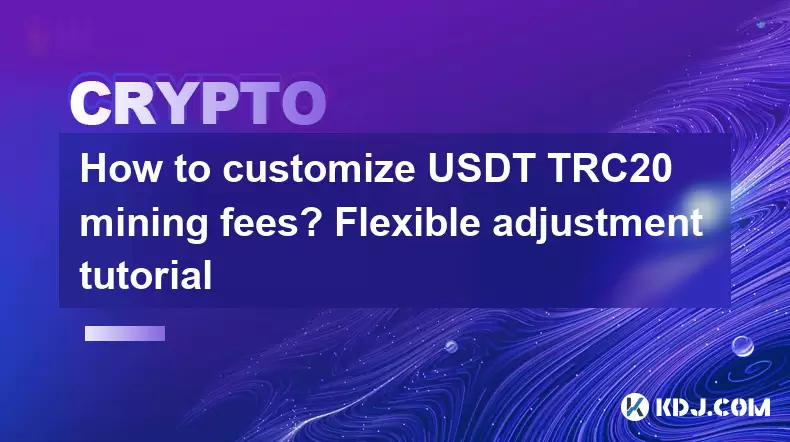
How to customize USDT TRC20 mining fees? Flexible adjustment tutorial
Jun 13,2025 at 01:42am
Understanding USDT TRC20 Mining FeesMining fees on the TRON (TRC20) network are essential for processing transactions. Unlike Bitcoin or Ethereum, where miners directly validate transactions, TRON uses a delegated proof-of-stake (DPoS) mechanism. However, users still need to pay bandwidth and energy fees, which are collectively referred to as 'mining fe...
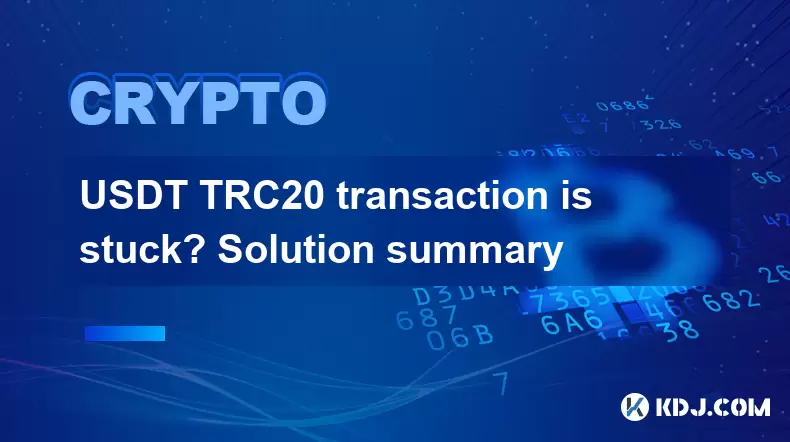
USDT TRC20 transaction is stuck? Solution summary
Jun 14,2025 at 11:15pm
Understanding USDT TRC20 TransactionsWhen users mention that a USDT TRC20 transaction is stuck, they typically refer to a situation where the transfer of Tether (USDT) on the TRON blockchain has not been confirmed for an extended period. This issue may arise due to various reasons such as network congestion, insufficient transaction fees, or wallet-rela...
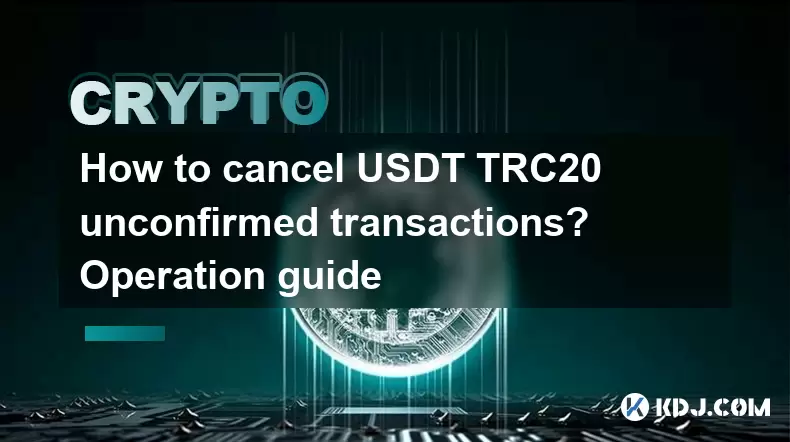
How to cancel USDT TRC20 unconfirmed transactions? Operation guide
Jun 13,2025 at 11:01pm
Understanding USDT TRC20 Unconfirmed TransactionsWhen dealing with USDT TRC20 transactions, it’s crucial to understand what an unconfirmed transaction means. An unconfirmed transaction is one that has been broadcasted to the blockchain network but hasn’t yet been included in a block. This typically occurs due to low transaction fees or network congestio...
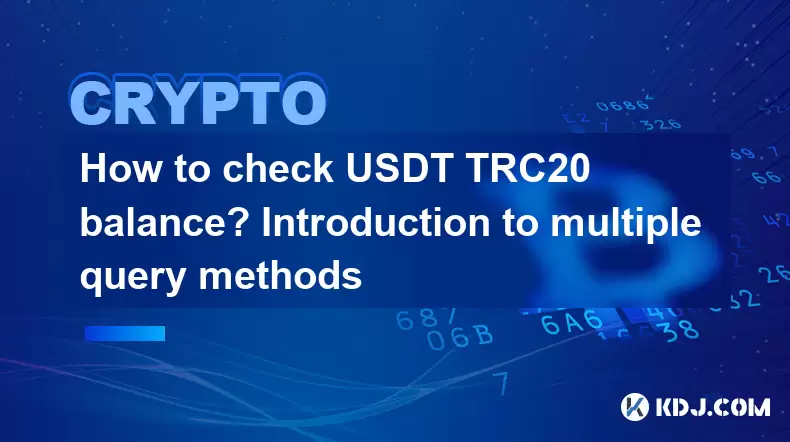
How to check USDT TRC20 balance? Introduction to multiple query methods
Jun 21,2025 at 02:42am
Understanding USDT TRC20 and Its ImportanceUSDT (Tether) is one of the most widely used stablecoins in the cryptocurrency market. It exists on multiple blockchain networks, including TRC20, which operates on the Tron (TRX) network. Checking your USDT TRC20 balance accurately is crucial for users who hold or transact with this asset. Whether you're sendi...
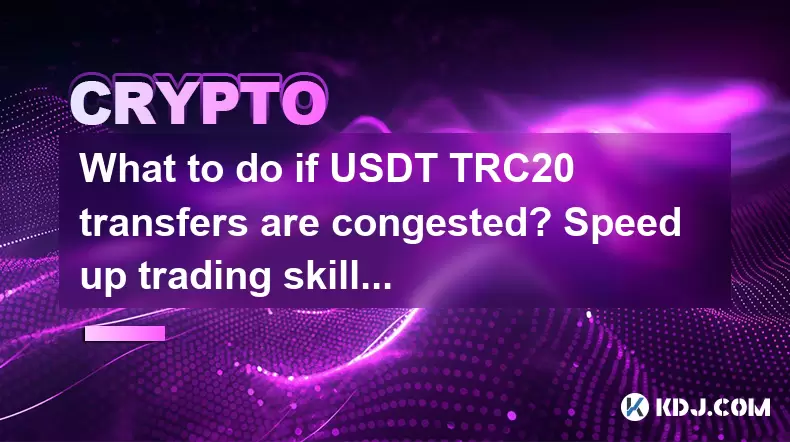
What to do if USDT TRC20 transfers are congested? Speed up trading skills
Jun 13,2025 at 09:56am
Understanding USDT TRC20 Transfer CongestionWhen transferring USDT TRC20, users may occasionally experience delays or congestion. This typically occurs due to network overload on the TRON blockchain, which hosts the TRC20 version of Tether. Unlike the ERC20 variant (which runs on Ethereum), TRC20 transactions are generally faster and cheaper, but during...
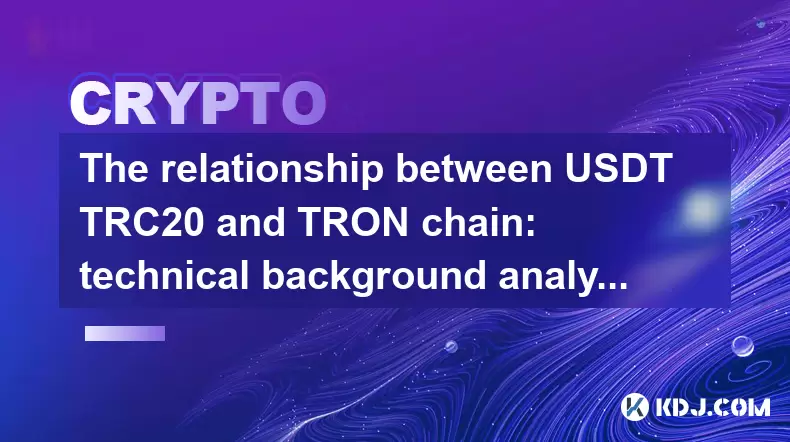
The relationship between USDT TRC20 and TRON chain: technical background analysis
Jun 12,2025 at 01:28pm
What is USDT TRC20?USDT TRC20 refers to the Tether (USDT) token issued on the TRON blockchain using the TRC-20 standard. Unlike the more commonly known ERC-20 version of USDT (which runs on Ethereum), the TRC-20 variant leverages the TRON network's infrastructure for faster and cheaper transactions. The emergence of this version came as part of Tether’s...

How to customize USDT TRC20 mining fees? Flexible adjustment tutorial
Jun 13,2025 at 01:42am
Understanding USDT TRC20 Mining FeesMining fees on the TRON (TRC20) network are essential for processing transactions. Unlike Bitcoin or Ethereum, where miners directly validate transactions, TRON uses a delegated proof-of-stake (DPoS) mechanism. However, users still need to pay bandwidth and energy fees, which are collectively referred to as 'mining fe...

USDT TRC20 transaction is stuck? Solution summary
Jun 14,2025 at 11:15pm
Understanding USDT TRC20 TransactionsWhen users mention that a USDT TRC20 transaction is stuck, they typically refer to a situation where the transfer of Tether (USDT) on the TRON blockchain has not been confirmed for an extended period. This issue may arise due to various reasons such as network congestion, insufficient transaction fees, or wallet-rela...

How to cancel USDT TRC20 unconfirmed transactions? Operation guide
Jun 13,2025 at 11:01pm
Understanding USDT TRC20 Unconfirmed TransactionsWhen dealing with USDT TRC20 transactions, it’s crucial to understand what an unconfirmed transaction means. An unconfirmed transaction is one that has been broadcasted to the blockchain network but hasn’t yet been included in a block. This typically occurs due to low transaction fees or network congestio...

How to check USDT TRC20 balance? Introduction to multiple query methods
Jun 21,2025 at 02:42am
Understanding USDT TRC20 and Its ImportanceUSDT (Tether) is one of the most widely used stablecoins in the cryptocurrency market. It exists on multiple blockchain networks, including TRC20, which operates on the Tron (TRX) network. Checking your USDT TRC20 balance accurately is crucial for users who hold or transact with this asset. Whether you're sendi...

What to do if USDT TRC20 transfers are congested? Speed up trading skills
Jun 13,2025 at 09:56am
Understanding USDT TRC20 Transfer CongestionWhen transferring USDT TRC20, users may occasionally experience delays or congestion. This typically occurs due to network overload on the TRON blockchain, which hosts the TRC20 version of Tether. Unlike the ERC20 variant (which runs on Ethereum), TRC20 transactions are generally faster and cheaper, but during...

The relationship between USDT TRC20 and TRON chain: technical background analysis
Jun 12,2025 at 01:28pm
What is USDT TRC20?USDT TRC20 refers to the Tether (USDT) token issued on the TRON blockchain using the TRC-20 standard. Unlike the more commonly known ERC-20 version of USDT (which runs on Ethereum), the TRC-20 variant leverages the TRON network's infrastructure for faster and cheaper transactions. The emergence of this version came as part of Tether’s...
See all articles

























































































